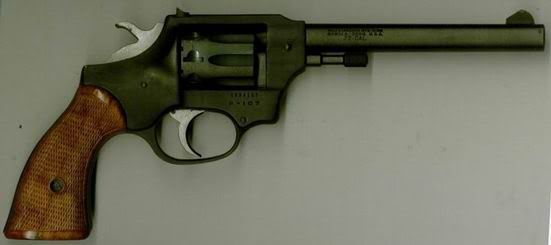We just purchased a .22 High Standard Sentinel Delux Revolver from an on line gun auction. The revolver has an essentially new appearance and, on arrival here was mechanically sound.

Test firing this weekend gave excellent accuracy and the fixed sights gave hits at the point of aim. However, after only a cylinder full of Win .22 LRHP from a bulk box, the roatation of the cylinder either double or single action became proplematic. Lubrication of working parts helped but the cause soon became clear. There is almost
NO barrel-cylinder gap. and even after wiping the rear of the barrel and the cylinder clean, you can hardly see daylight between them. I have only one gauge for my .44 Mag Dan Wesson and that won't even begin to measure the gap. Much too big. I am going to get a set of feeler gauges tomorrow and see if any will measure it.
I'm an old revolver shooter since my teens but never encountered a problem like this. I am not a gunsmith though I have some limited ability as long as I have the tools. My questions are 1) What should the cylinder gap be for this revolver, and 2) How difficult is it to hone some metal off the rear of the barrel and smooth out the forcing cone afterward? I have a dremel tool, some fine grit flat hand honing stones, and a good vise with lead jaws available. We paid a fair price for the revolver and it's otherwise just right for its intended purpose. A visit to a gunsmith in our area would be time consuming and time of return "iffy". Any and all advice would be appreciated.
Best Regards,
stuffit